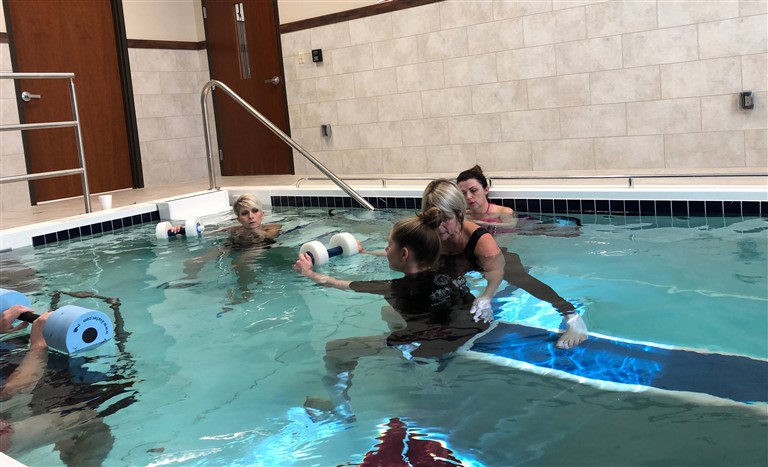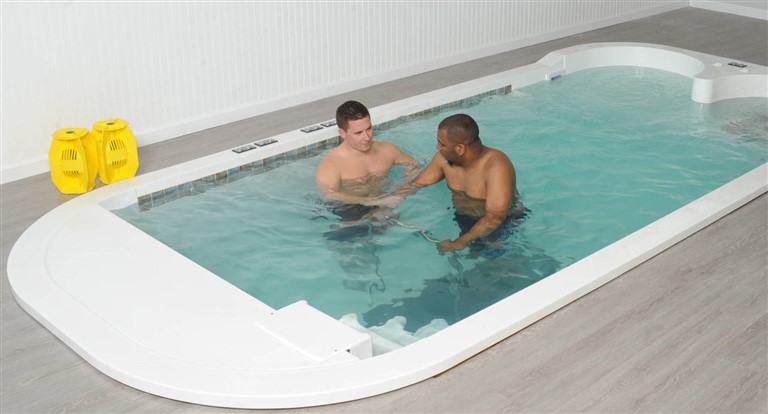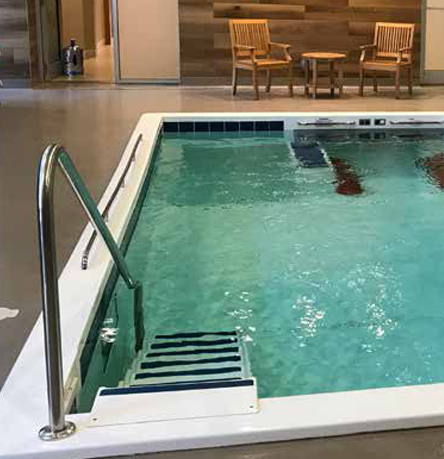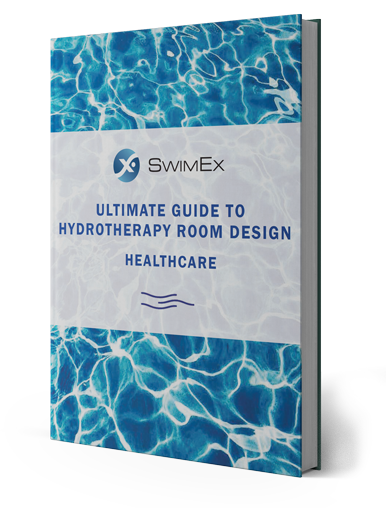There are many instances when treating a patient in the water is better than treating them on land. Aquatic physical therapy is a highly effective, safe treatment tool to achieve successful outcomes. Plus, if done correctly it can yield higher reimbursement rates. But, what factors go into determining whether to use aquatic physical therapy or employ land-only protocols? A good place to start is by understanding why water works. Then, there are key questions to answer that will help you conclude what form of treatment is the best approach to take.
* If you think you need physical therapy, whether on land or in a pool, consult your doctor or a medical professional first.
Basic properties of water
By familiarizing yourself with these terms, you can maximize aquatic physical therapy outcomes.
- Buoyancy: the ability to off-load the body while in water. It does the opposite of gravity, creating unique advantages. For instance, reducing the weight of a limb or decompressing the spine or surgical site to allow for freedom of movement and simulated tasks without fear of injury or pain.
- Viscosity: provides a resistance that can be combined with the support of a body part while allowing for resistance in any direction. It can be increased or decreased for the person’s tolerance and stopped in an instant without causing pain.
- Hydrostatic pressure: provides a graded pressure on the deepest part of the submerged body part. It increases fluid return to the heart and has special advantages for cardiac and pulmonary physical therapists.
- Thermal shifts: allows for the warming of tissue without heating and causes relaxation that increases the tolerance for stretch and manual treatment without the use of external modalities.
- Surface tension: the abrupt change from buoyant to gravitational forces allows for increased arousal and need for the body to adapt in an instance.
- Current: provides support and interval resistance. Working with or against the flow allows for different exercises and therapy protocols. Provides the ability to efficiently progress patient from one session to the next. Offers versatility of exercises from one session to the next.
- Refraction: provides a stimulus to the patient to improve posture and reduce the dependence on visual feedback.
Also see the information on our page that broadly explains how hydrotherapy works.
Once you understand the many ways water therapy can successful treat a patient, the next thing is to determine if your client will benefit from it. These questions will help you reach a conclusion.

How to choose between aquatic physical therapy and land-only treatment
First, assess the patient. Then determine the following:
- Is it possible for the client to achieve success through traditional land therapy only?
- Does the patient have restrictions that rule out aquatic physical therapy, i.e. open wound, incontinence?
- Is the patient unable to tolerate land due to pain or are they unable to move freely on land without pain and substitution?
- Has the patient failed previous attempts to participate in land-based treatment and refuses further land care?
- Is the patient unable to move on land? Is the therapist unable to handle the patient effectively on land due to size, debilitation, and diagnosis?
- Does the patient require the properties of water – buoyancy, hydrostatic pressure, viscosity – to get the full benefits of skilled care?
- By using the water, is it advantageous to extend the length of reimbursed sessions (combining land with water therapy) to get a higher rate of success and ROI?
If you answered “yes” to any of the questions, aquatic physical therapy is a good option. So, how can you use the properties of water to your advantage?

Positive treatment examples
Following are examples of how you can use aquatic physical therapy by employing the basic properties of water.
- Reduce edema around the joint through the principle of hydrostatic pressure, allowing for improved ROM.
- Reduce pain due to thermal shifts, allowing for better position and tolerance of manual treatment.
- Aid with balance exercises by using up thrust to improve posture. The principles of viscosity will help slow movement allowing for better processing time during fall recovery practice.
- Provide increased arousal using the property of surface tension as the patient struggles with lethargy which impairs the cognitive processing.
- Aid movement while buoyancy reduces weight bearing.
- Reduce gait deviation due to reduced joint loading. Water’s buoyancy helps patients improve posture without excess stress and pain.
In many cases, aquatic physical therapy has higher reimbursement rates than land therapy. Do your research to see if this is true for your facility or clinic. If you find that the answer is yes, then hydrotherapy is a good tool for you to offer. In fact, if you want to improve your ROI even more look for pools with a current.
Pools with a current provide a higher level of exercise options that can extend aquatic therapy sessions, resulting in additional reimbursement. For instance, clients can initially walk back and forth in still water. Then, extend their time in the pool by turning on the current. The client can now walk in and out of the current to continue working on balance in a more challenging yet still safe environment.
~ Authored by Liz Lecomte

